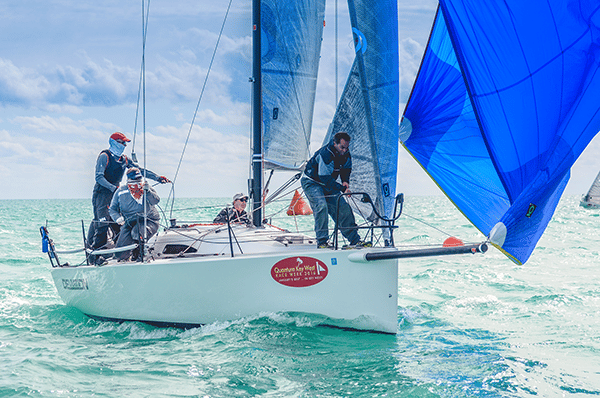
In large fleets, starts can make or break a race, so make sure when you line up for go, you know exactly where you want to be, and how to get your boat moving afterwards. Remember these key aspects of every start and you’ll get off the line every time!
Starts
On the line Checks
- Head to wind check. Sight across the boat, which end is higher or favored?
- Where is the next mark?
- How strong is the fleet? Size/speed of competitors.
- What is the best course for the fastest first beat?
- Check laylines for the starting box – windward & leeward ends.
- Time the line – know how long it takes to run to each end.
- The Practice Start
A practice start helps assure success by creating a plan of attack for your next set up.
- Confirm lines of sight and bearings on the line
- Check laylines
- Confirm wind direction and close hauled headings
- Approximate timing for the final approach
- Check sail trim for acceleration off the line
- Confirm crew organization and communications
Setting up
Time & distance – you need to know time it takes to get up to full speed, and distance needed
Set a timed run, away from the line. Turn, return back to the line
Boat on boat:
- Pushing a leader down the line, don’t get an overlap
- Kill distance & keep speed
- Keep speed and maneuvering capability
- Know when to stop,
Crew Help:
- Bowman: Call distance to line
- Velocitek: Distance to line
- Line sights: One person set to call line, and boat line up. Keep bow even with the competition
Getting the Boat Up to Speed
There is a key dynamic between the skipper and the mainsail trimmer. The mainsail trimmer has to be on the ball. They are key to getting the boat up to speed, and when to trim to get the boat to point. If the boat is going slow and you over trim the main for height you can suffer and never get the performance you are looking for. In short, you need boat speed first and pointing ability second.
The other key is that the mainsail trimmer steers the boat as much if not more than the skipper. If the mainsail trimmer is slow on adjustments, then performance suffers. The mainsail trimmer needs to have a good handle on boat speed and angle. They have to know when to sheet harder to get the boat to point and when to ease and get the boat up to top speed. Also, the mainsail trimmer has to use all the tools in order to get the most out of the boat. Adjusting backstay, using the traveler, setting the vang and Cunningham are all important ingredients to proper main trim and performance.
Finally, the main trimmer needs to be proactive as opposed to reactive. By being proactive, they need to coach the skipper and the boat. They need to adjust quickly to changes and be able to get the best possible performance out of your sail plan and boat.
After each regatta, look back at the overall team performance and note what the team did well and any areas that need improvement. Keep practicing and your team will see the results.
Deviation finished 2nd in the J/88 class at the 2016 Quantum Key West Race Week.









